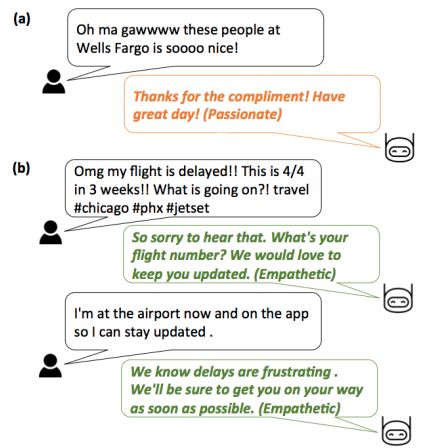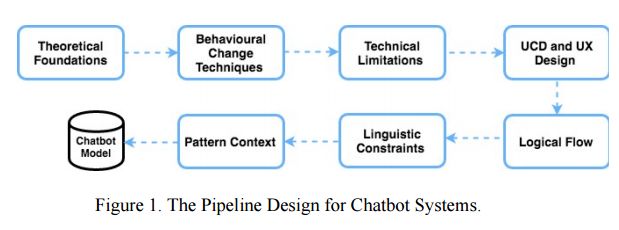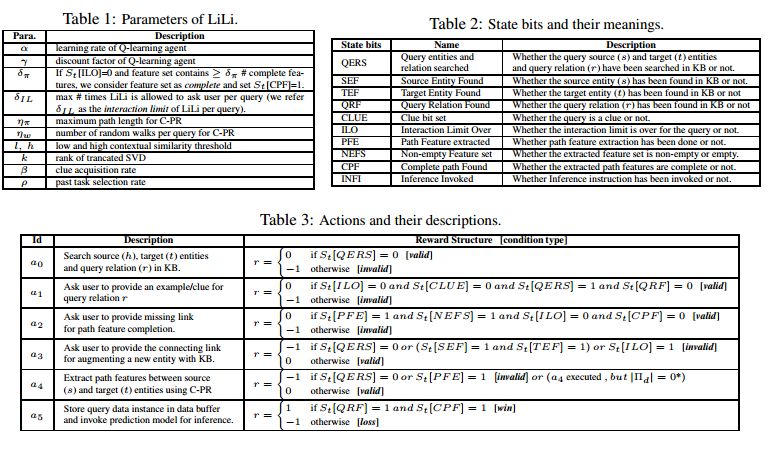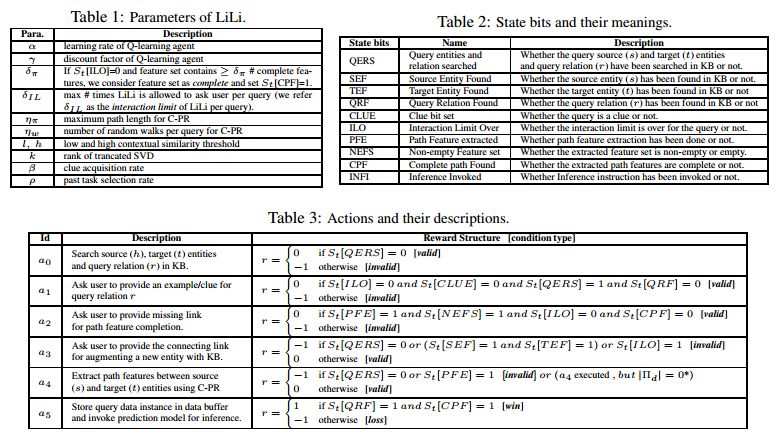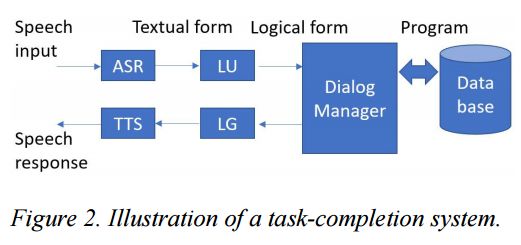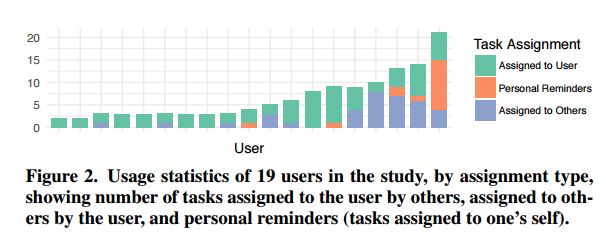【论文推荐】最新7篇聊天机器人(Chatbot)相关论文—触动你的心、DeepProbe、饮食推荐、知识学习、交互、挑战、管理
【导读】专知内容组整理了最近七篇聊天机器人(Chatbot)相关文章,为大家进行介绍,欢迎查看!
1. Touch Your Heart: A Tone-aware Chatbot for Customer Care on Social Media(触动你的心:一个在社交媒体上为客户服务的语气感知的聊天机器人)
作者:Tianran Hu,Anbang Xu,Zhe Liu,Quanzeng You,Yufan Guo,Vibha Sinha,Jiebo Lu,Rama Akkiraju
机构:University of Rochester
摘要:Chatbot has become an important solution to rapidly increasing customer care demands on social media in recent years. However, current work on chatbot for customer care ignores a key to impact user experience - tones. In this work, we create a novel tone-aware chatbot that generates toned responses to user requests on social media. We first conduct a formative research, in which the effects of tones are studied. Significant and various influences of different tones on user experience are uncovered in the study. With the knowledge of effects of tones, we design a deep learning based chatbot that takes tone information into account. We train our system on over 1.5 million real customer care conversations collected from Twitter. The evaluation reveals that our tone-aware chatbot generates as appropriate responses to user requests as human agents. More importantly, our chatbot is perceived to be even more empathetic than human agents.
期刊:arXiv, 2018年3月8日
网址:
http://www.zhuanzhi.ai/document/3a1e8d0366ace45806477a202b1d66d1
2. DeepProbe: Information Directed Sequence Understanding and Chatbot Design via Recurrent Neural Networks(DeepProbe:通过递归神经网络对信息进行顺序理解和聊天机器人设计)
作者:Zi Yin,Keng-hao Chang,Ruofei Zhang
机构:Stanford University,Microsoft
摘要:Information extraction and user intention identification are central topics in modern query understanding and recommendation systems. In this paper, we propose DeepProbe, a generic information-directed interaction framework which is built around an attention-based sequence to sequence (seq2seq) recurrent neural network. DeepProbe can rephrase, evaluate, and even actively ask questions, leveraging the generative ability and likelihood estimation made possible by seq2seq models. DeepProbe makes decisions based on a derived uncertainty (entropy) measure conditioned on user inputs, possibly with multiple rounds of interactions. Three applications, namely a rewritter, a relevance scorer and a chatbot for ad recommendation, were built around DeepProbe, with the first two serving as precursory building blocks for the third. We first use the seq2seq model in DeepProbe to rewrite a user query into one of standard query form, which is submitted to an ordinary recommendation system. Secondly, we evaluate DeepProbe's seq2seq model-based relevance scoring. Finally, we build a chatbot prototype capable of making active user interactions, which can ask questions that maximize information gain, allowing for a more efficient user intention idenfication process. We evaluate first two applications by 1) comparing with baselines by BLEU and AUC, and 2) human judge evaluation. Both demonstrate significant improvements compared with current state-of-the-art systems, proving their values as useful tools on their own, and at the same time laying a good foundation for the ongoing chatbot application.
期刊:arXiv, 2018年3月2日
网址:
http://www.zhuanzhi.ai/document/92aa72b24c3a8b2ce47ba6fe3a64c101
3. Can a Chatbot Determine My Diet?: Addressing Challenges of Chatbot Application for Meal Recommendation(聊天机器人能决定我的饮食吗?:解决聊天机器人在饮食推荐中的挑战)
作者:Ahmed Fadhil
机构:University of Trento
摘要:Poor nutrition can lead to reduced immunity, increased susceptibility to disease, impaired physical and mental development, and reduced productivity. A conversational agent can support people as a virtual coach, however building such systems still have its associated challenges and limitations. This paper describes the background and motivation for chatbot systems in the context of healthy nutrition recommendation. We discuss current challenges associated with chatbot application, we tackled technical, theoretical, behavioural, and social aspects of the challenges. We then propose a pipeline to be used as guidelines by developers to implement theoretically and technically robust chatbot systems.
期刊:arXiv, 2018年2月26日
网址:
http://www.zhuanzhi.ai/document/ff13c5a7d744f7a952fa2afa59cc8ca5
4.Towards a Continuous Knowledge Learning Engine for Chatbots(聊天机器人的持续知识学习引擎)
作者:Sahisnu Mazumder,Nianzu Ma,Bing Liu
机构:University of Illinois at Chicago
摘要:Although chatbots have been very popular in recent years, they still have some serious weaknesses which limit the scope of their applications. One major weakness is that they cannot learn new knowledge during the conversation process, i.e., their knowledge is fixed beforehand and cannot be expanded or updated during conversation. In this paper, we propose to build a general knowledge learning engine for chatbots to enable them to continuously and interactively learn new knowledge during conversations. As time goes by, they become more and more knowledgeable and better and better at learning and conversation. We model the task as an open-world knowledge base completion problem and propose a novel technique called lifelong interactive learning and inference (LiLi) to solve it. LiLi works by imitating how humans acquire knowledge and perform inference during an interactive conversation. Our experimental results show LiLi is highly promising.
期刊:arXiv, 2018年2月24日
网址:
http://www.zhuanzhi.ai/document/8c13c8eb7a6f5d8630b455c48394a1ac
5. Towards an Engine for Lifelong Interactive Knowledge Learning in Human-Machine Conversations(人机对话中的对一个引擎进行终生的交互知识学习)
作者:Sahisnu Mazumder,Nianzu Ma,Bing Liu
机构:University of Illinois at Chicago
摘要:Although chatbots have been very popular in recent years, they still have some serious weaknesses which limit the scope of their applications. One major weakness is that they cannot learn new knowledge during the conversation process, i.e., their knowledge is fixed beforehand and cannot be expanded or updated during conversation. In this paper, we propose to build a general knowledge learning engine for chatbots to enable them to continuously and interactively learn new knowledge during conversations. As time goes by, they become more and more knowledgeable and better and better at learning and conversation. We model the task as an open-world knowledge base completion problem and propose a novel technique called lifelong interactive learning and inference (LiLi) to solve it. LiLi works by imitating how humans acquire knowledge and perform inference during an interactive conversation. Our experimental results show LiLi is highly promising.
期刊:arXiv, 2018年2月17日
网址:
http://www.zhuanzhi.ai/document/38b5c03b6549c33eb6d1a6d745b5708b
6. From Eliza to XiaoIce: Challenges and Opportunities with Social Chatbots(从Eliza到XiaoIce: 社交聊天机器人带来的挑战和机遇)
作者:Heung-Yeung Shum,Xiaodong He,Di Li
机构:Microsoft Corporation
摘要:Conversational systems have come a long way since their inception in the 1960s. After decades of research and development, we've seen progress from Eliza and Parry in the 60's and 70's, to task-completion systems as in the DARPA Communicator program in the 2000s, to intelligent personal assistants such as Siri in the 2010s, to today's social chatbots like XiaoIce. Social chatbots' appeal lies not only in their ability to respond to users' diverse requests, but also in being able to establish an emotional connection with users. The latter is done by satisfying users' need for communication, affection, as well as social belonging. To further the advancement and adoption of social chatbots, their design must focus on user engagement and take both intellectual quotient (IQ) and emotional quotient (EQ) into account. Users should want to engage with a social chatbot; as such, we define the success metric for social chatbots as conversation-turns per session (CPS). Using XiaoIce as an illustrative example, we discuss key technologies in building social chatbots from core chat to visual awareness to skills. We also show how XiaoIce can dynamically recognize emotion and engage the user throughout long conversations with appropriate interpersonal responses. As we become the first generation of humans ever living with AI, we have a responsibility to design social chatbots to be both useful and empathetic, so they will become ubiquitous and help society as a whole.
期刊:arXiv, 2018年2月10日
网址:
http://www.zhuanzhi.ai/document/540358ca01368c02590441b464d01da7
7. Understanding Chatbot-mediated Task Management(理解以机器人为媒介的任务管理)
作者:Carlos Toxtli,Andrés Monroy-Hernández,Justin Cranshaw
机构:West Virginia University,Microsoft Research
摘要:Effective task management is essential to successful team collaboration. While the past decade has seen considerable innovation in systems that track and manage group tasks, these innovations have typically been outside of the principal communication channels: email, instant messenger, and group chat. Teams formulate, discuss, refine, assign, and track the progress of their collaborative tasks over electronic communication channels, yet they must leave these channels to update their task-tracking tools, creating a source of friction and inefficiency. To address this problem, we explore how bots might be used to mediate task management for individuals and teams. We deploy a prototype bot to eight different teams of information workers to help them create, assign, and keep track of tasks, all within their main communication channel. We derived seven insights for the design of future bots for coordinating work.
期刊:arXiv, 2018年2月9日
网址:
http://www.zhuanzhi.ai/document/4e63e23b393fd521f2889024f1efe2c7
-END-
专 · 知
人工智能领域主题知识资料查看获取:【专知荟萃】人工智能领域26个主题知识资料全集(入门/进阶/论文/综述/视频/专家等)
同时欢迎各位用户进行专知投稿,详情请点击:
【诚邀】专知诚挚邀请各位专业者加入AI创作者计划!了解使用专知!
请PC登录www.zhuanzhi.ai或者点击阅读原文,注册登录专知,获取更多AI知识资料!
请扫一扫如下二维码关注我们的公众号,获取人工智能的专业知识!
请加专知小助手微信(Rancho_Fang),加入专知主题人工智能群交流!
点击“阅读原文”,使用专知!
